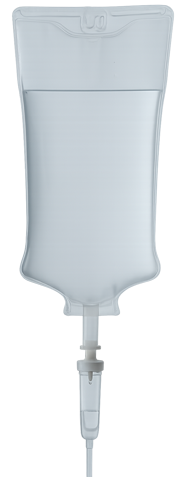Throughout all developmental stages, adequate vitamin D intake is essential for optimal bone health and immune regulation. The medical community has long known that among infants and children, the consequences of vitamin D deficiency can be dire, ranging from rickets — characterized by softened, weakened bones — to unexpected death.
More recent research points to correlations between inadequate vitamin D levels and both childhood asthma and recurrent infections.
A recent resurgence in vitamin D deficiency has occurred in many countries worldwide — including the United States and the United Kingdom. In response to this surprising–and largely preventable– trend, a team of British researchers examined the potential impact of low vitamin D levels on pediatric morbidity and mortality in the UK.
In their study, published late last year in Pediatric and Developmental Pathology, the authors identify the London borough of Tower Hamlets, a neighborhood whose pediatric population exhibits low vitamin D levels, as the focal point of their research. They note that while deficiency occurs across all of the community’s ethnic groups, inadequate vitamin D levels are particularly prominent among children of Asian and African origin.
A Quiet Killer
The study presents a retrospective review of pediatric autopsy files from the Royal London Hospital in North East London. Researchers identified 183 cases of death in children ranging from 2 days to 10 years of age between the years 2009 and 2012.
In 52 of those cases, the child’s vitamin D status was known and grouped into one of four categories: vitamin D deficiency (VDD), vitamin D insufficiency (VDI), vitamin D suboptimal (VDS), and vitamin D adequate or normal (VDN). Authors defined VDD as having combined levels of 25-OH vitamin D2 and vitamin D3 of <25 nmol/L, VDI as 25–49 nmol/L, VDS as 50–79 nmol/L, and VDN as >80 nmol/L. They note that postmortem vitamin D levels are stable and thereby easy — as well as inexpensive — to measure.
Of the 52 cases examined, the researchers found that 17 children were vitamin D deficient at the time of death. Three of those 17 had rickets. 24 children were identified as VDI and another 10 as VDS. Only one child — a white 3-month old infant that died of SIDS — was found to have adequate postmortem vitamin D.
In just a small number of cases involving dilated cardiomyopathy and fatal seizures, vitamin D deficiency — mostly due to low blood calcium — was identified as a direct cause of death. But the influence of vitamin D on morbidity appears to be much more widespread, the authors argue.
Insufficient exposure to sunlight is the leading cause of vitamin D deficiency. Contributing factors include a lack of time spent outdoors during daylight hours, the use of strong sunscreen protection, industrial pollution, and inadequate skin exposure either due to darker skin pigmentation or concealing clothing.
This study, the authors hope, will increase awareness around the importance of including vitamin D level measurements in postmortem examinations. It is especially crucial to measure vitamin D in infants with single or multiple fractures, they argue.
While it’s standard practice to take x-rays during pediatric autopsy, which may identify bone growth abnormalities and thus potential vitamin D deficiency, radiological evidence alone isn’t always a reliable indicator of the cause of death. Using vitamin D measurements as a diagnostic tool may help to paint a broader picture of the pathophysiological mechanisms underlying a child’s death.
It makes a lot of sense to promote vitamin D intake during pregnancy in order to support normal fetal bone growth. Postnatally, a combination of nutritional vitamin D intake and sun exposure are critical to maintaining healthy skeletal and immune system development in newborns and children.
Article By Kristen Schepker, Assistant Editor – Holistic Primary Care, News for Health & Healing







